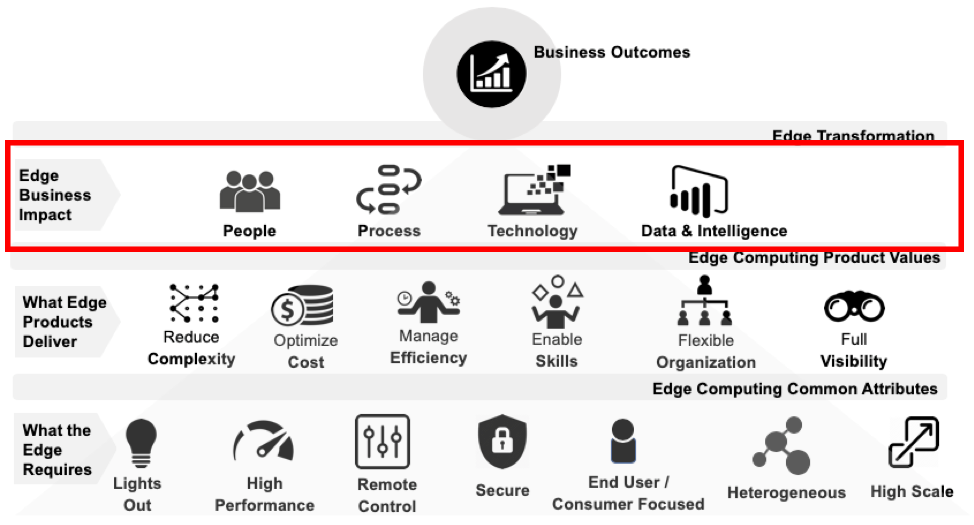This is the third in a four-part weekly series that examines RF Code's Edge Computing model. The goal of this series is to provide a foundational understanding of the core Edge requirements, the Edge objective values, product relevance and positioning, and how companies can evaluate and assess their path to Edge.
In part 1 of this series we examined the common attributes of Edge-oriented products: the baseline features or attributes that a product must exhibit in order to logically be considered an Edge product at all. In part 2 we looked at the ways in which Edge -oriented products can be differentiated. For this edition we will examine the business impact portion of the Edge computing model, and see how Edge-oriented products deliver value by providing visibility into the business the Edge delivers.

To achieve business value from Edge technology it must adhere and support a companies existing organizational, role and skills (people), processes, established and planned tools and provide business insights through data and intelligence.
Every Edge product must deliver value while addressing the people, process, technology and data and intelligence requirements.
People:
- Organization
- Roles & Responsibilities
Process:
- Integration
- Automation
Technology:
- Control
- Visibility
Data & Intelligence:
- Decisions
- Value
People
Reduce Complexity
- Multiple points of reference to understand environmental conditions and the impact on the Edge assets
- Disparate monitoring points requires greater cross team collaboration
Optimize Cost
- Different teams use different monitors to understand Edge health requiring more skilled personnel
Manage Efficiency
- Silo’s create monitoring inefficiencies, conflict and ‘true state' disparity
- Specialists required to interpret different Edge systems
- Large teams required to manage Edge locations and the heterogeneous equipment
Process
Reduce Complexity
- Disparate technology supporting different parts of the Edge creates high process complexity
Optimize Cost
- Edge location access and change is not monitored or guided, taking more time with greater risk
- Error reporting is a long process impacting business availability
- Asset tracking, when not connected to the network is a manual process
Manage Efficiency
- Physical passive asset tagging is a manual process
- Multiple monitors required to understand Edge state
- Edge issues are not aligned with the impact on the business
Technology
Reduce Complexity
- Assets tracking and environment monitoring requires power and the network
- Environmental monitoring requires multiple monitors
- No custom integration with Edge Assets or environmental systems
Optimize Cost
- Assets tracked using adapters, custom integration and additional skills
- Multiple skills and personnel required to monitor the Edge infrastructure
- Environment health checked using multiple monitors and system consoles
Manage Efficiency
- Network performance at the Edge impacts infrastructure monitoring
- No integration with DCIM, environment and service mgmt. products create inefficiencies in problem management and resolution
Data & Intelligence
Reduce Complexity
- No common source of truth
- No ability to compare infrastructure state and environmental performance across Edge facilities
Optimize Cost
- No consolidated power and energy comparisons to allow changes to optimize consumption
- Edge rack capacity not monitored to enable resource optimization
- Manual asset movement tracking resulting in lost or mislaid assets
Manage Efficiency
- No information to compare the environmental efficiency across all Edge locations
- No consolidated data to compare the efficiency of different power and cooling systems



